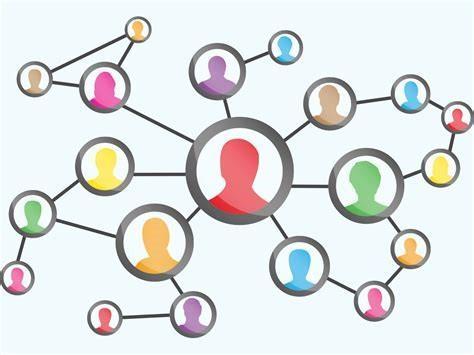On June 11, 2025, puzzle enthusiasts tackling The New York Times’ “Connections: Sports Edition” puzzle No. 261 faced a challenging test of their sports knowledge and pattern-recognition skills. As players sought to uncover the intricate links between seemingly unrelated clues, expert hints proved invaluable in navigating the puzzle’s complex themes. This article provides timely guidance and strategic tips to help solvers make headway in deciphering the latest installment of the popular connections series.
Connections Sports Edition Puzzle Strategies for June 11 2025
Mastering the Connections Sports Edition puzzle for June 11, 2025, requires keen attention to sports terminology and iconic athletic references. Start by focusing on common sports categories such as team sports, individual sports, equipment, and famous athletes. Look for patterns linking words to these themes-for example, grouping terms related to basketball, football gear, or legendary players can quickly simplify the puzzle. Keep in mind that some entries may be deceptively linked through less obvious connections like stadium names or championship titles.
To gain an edge, utilize these hints when tackling the challenge:
- Identify core sports genres to narrow down the possible clusters.
- Watch for homonyms or double meanings related to sports lingo.
- Cross-reference familiar event names or sports venues embedded in the puzzle.
- Group items chronologically, such as historic vs. contemporary athletes or competitions.
| Connection Theme | Example Terms |
|---|---|
| Team Sports | Soccer, Baseball, Volleyball, Rugby |
| Equipment | Helmet, Bat, Cleats, Goggles |
| Legendary Athletes | Jordan, Williams, Ali, Gretzky |
| Major Events | Olympics, Super Bowl, World Cup |
Analyzing Key Clues and Themes in The New York Times Puzzle No 261
Within this edition’s challenge, a strategic blend of athletic terms and iconic sports figures emerges as the linchpin for solving Puzzle No. 261. Observant players will note that many connections pivot around team names, famous stadiums, and historic game outcomes, creating a backdrop that is both intellectually stimulating and rich in sports culture. The puzzle’s architecture cleverly uses word groupings tied to various sports disciplines-baseball, basketball, tennis, and soccer-forcing solvers to think beyond simple associations and tap into a deeper knowledge of athletic lore.
Key clues to identify include recurring motifs like “Grand Slam,” “MVP,” and “Halftime,” which serve as anchors for grouping answers. Additionally, pay attention to subtle hints hidden within player nicknames and famous sporting venues, which help in categorizing the eight unique target groups. Below is a quick reference table that outlines some of the core themes you’ll want to keep in mind:
| Theme | Example Clue | Related Group |
|---|---|---|
| Major Championships | “Wimbledon” | Tennis |
| Legendary Players | “Jordan” | Basketball |
| Stadiums | “Fenway” | Baseball |
| Common Terms | “Offside” | Soccer |
- Watch for cultural significance: The puzzle nods to pivotal moments in sports history.
- Group by sport: Categorizing by sport type provides a clearer solving pathway.
- Utilize nicknames: Recognize players’ common nicknames to decode tricky clues.
Expert Tips for Efficient Solving and Maximizing Success
Mastering the connections in sports-themed puzzles hinges on recognizing patterns beyond the obvious. Start by categorizing answers into familiar sports categories such as athletes, teams, events, or terminology. When dealing with seemingly unrelated clues, lean on your knowledge of leagues, championships, or even niche sports trivia. Don’t hesitate to jot down partial connections-sometimes a single shared attribute like geographic location or era can crack a cluster wide open. Balancing speed with accuracy means returning to unfinished groups periodically; fresh eyes often reveal overlooked links.
Efficient solving also requires strategic use of available tools. Utilize digital resources for quick fact-checking to confirm hunches, but avoid over-reliance, as intuitive thinking often yields the most satisfying breakthroughs. Maintaining a clear workspace-both physical and mental-helps keep track of discovered connections and possible paths forward. Below is a quick reference guide for common sports puzzle strategies:
| Strategy | Purpose | Example |
|---|---|---|
| Clustering by Sport | Grouping related clues | All NBA team names |
| Timeline Sequencing | Ordering by event date | Olympic gold medalists by year |
| Terminology Matching | Linking related jargon | Baseball terms like “pitch” & “strike” |
| Geographic Connections | Grouping by location | Soccer clubs from the same country |
Key Takeaways
As puzzle enthusiasts wrap up their challenge of Connections: Sports Edition for June 11, 2025, Puzzle No. 261, the blend of sports trivia and wordplay once again proved a compelling test of wit and knowledge. Whether solving solo or competing with friends, participants sharpened their mental agility while celebrating the dynamic world of sports. Stay tuned for upcoming puzzles that continue to engage and entertain, bringing fresh challenges to the forefront of the New York Times’ acclaimed series.
